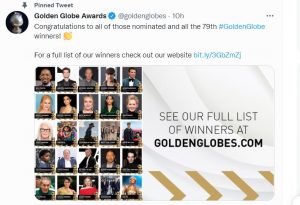5 consumer behavior trends PR pros should know for 2021
The novel coronavirus has changed everything for businesses and their customers. Here are some of the trends that have grown out of the pandemic that will be with us into next year.

Editor’s note: This article is a re-run as part of our countdown of top stories from the past year.
The pandemic made two things very clear for PR professionals. First, a strong communications strategy and crisis communication plan are key for not only staying afloat, but also coming out of the pandemic in a stronger position. Second, it is crucial to embrace the power of the pivot.
Leaders and PR professionals who are nimble and able to adapt to fast-changing trends in the marketplace are in a better position to overcome adversity and come out stronger post-recession.
As communications pros, the power of the pivot hinges on understanding our consumer. What are consumers feeling and experiencing right now, and what are they looking for, expecting from the brands they love? PR professionals must take these trends into consideration as they continue to navigate COVID-19 and begin crafting their strategies for 2021.
These five consumer trends are not only here to stay, but they completely change how we do business. If you can incorporate these trends into your communications strategies, you will not only earn the trust and loyalty of your target consumer, but you will help the brand or business you work for continue to grow and thrive through—and beyond—COVID-19.
1. Increased emphasis on health and safety
Consumers are not only purchasing more health-related products, like hand sanitizer and immunity boosters, but they are also more likely to purchase from a brand that they perceive to be safe and minimize unnecessary risk.
A recent Consumer Index Report by Ernst & Young reports that 26% of consumers surveyed prefer brands and products they trust to be safe and minimize unnecessary risks. Fifty-seven percent say they now pay more attention to how healthy the products they buy are for them.
PRO TIP: Communicate how you are prioritizing the health and safety of your staff and consumers. Consider less of the soft and cuddly and more of the “this is what we’re doing.”
2. Value based spending
COVID-19 and the Black Lives Matter Movement have increased value-based spending in the U.S. Consumers not only want to purchase goods and services locally or from Black-owned businesses, but also want to buy from brands that align with their values.
The same Ernst & Young survey shows that 59% of surveyed consumers are likely to shop more locally in the long term. In addition, a recent Consumer Index Report by Suzy Consumer Insights shares that 65% of consumers are more likely to support a brand that cares about the same social issues they do. Nearly half of those surveyed are researching and purchasing from Black-owned businesses, and more than half of consumers are wanting brands to stand up for social issues.
PRO TIP: Use your reach to be a leader for change. More than words, consumers want action. They want to see what exactly you are doing to drive change in your industry and community. This humanizes your brand and earns good will and trust from your consumers and stakeholders.
This is not the time to go silent. People are looking to you for leadership and support.
3. Creating a human connection, online
Ninety percent of people in the U.S. are spending more time on their devices. We are exercising, socializing, working, shopping, and more—online. It’s not just Gen Z and Millennials anymore; it is all of us.
Though digital fatigue is real, there are certain digital experiences that consumers are getting used to, like BOPIS (Buy Online, Pickup in Store). Your website and social channels are now the front door to your brand or business. You should be investing in e-commerce, virtual events, your online channels and content. This is how consumers are discovering and engaging with brands and businesses today.
PRO TIP: The digital experience is now the human experience. Consumers still crave human-to-human connection. How can you create a more personalized, human experience online? Virtual events, authentic content (especially video) and empathy (a lot of empathy).
4. New tech
Shoppers are now open to trying new tech like augmented reality (AR) and virtual reality (VR) to try out their purchase before they commit. Fenty by Rihanna allows consumers to upload a photo of themselves to test out new makeup. Warby Parker has a “virtual try on” option on its app, and IKEA has a new AR app that allows customers to visualize furniture and kitchen designs in their home.
The approach is two-fold. It creates a personalized experience for the shopper, and allows them to experience the product outside of a store, where they would normally be able to try the product on.
PRO TIP: As communications pros, we need to look for ways to use technology to better connect with our community, and offer the best customer experience possible. Customer service is how you stand out from competitors and improve marketing performance.
Technology can help create a personalized shopping experience, like the Fenty example above, as well as better customer service and convenient shopping experiences. Voice-activated ordering and contactless payment options are good examples of this.
Make sure you carefully choose how you incorporate technology into your user experience since today’s tech savvy consumer has a lower tolerance for missteps. Make sure you are catering directly to their needs, and provide a high level of service.
5. Driven by data
Consumers are feeling more comfortable sharing their data if they trust it will be used responsibly. Ernst & Young reports 53% of consumers are happy to make their personal data available if it helps to monitor and track an infection cluster. This trend is lending itself to business opportunities and increased transparency between a brand and consumer.
There’s an opportunity for brands and businesses to get to know their customers on a whole new level and personalize offers, promotions, and experiences like never before.
PRO TIP: As a marketing and communications leader, you own the consumer/brand relationship within your organization. If customers are more likely to share their personal data, we have a responsibility to make sure we don’t take advantage of their trust, but to also use that information to create a more personal customer experience.
This is an amazing opportunity to get up close and personal with our customers. With data and technology, like AI, we can create highly personalized customer experiences with tailored content (like Facebook and Spotify), but also optimize our communications and business strategies to best serve our target customer.
Kristin Carpenter is the founder and CEO of Verde Brand Communications and the Multi-Channel Marketing Academy, and host of the Channel Mastery podcast.







Having a deep understanding of consumers is essential if you want to continue to be successful in business.
Thank you for your advice, I think that 2021 will be very interesting for marketers around the world and there will be new trends and methods of getting new customers and greater efficiency
Much obliged to you for your recommendation, I figure it will be best in 2021 and its truly astounding occasion to get very close with our clients
The epic Covid has made a huge difference for organizations and their clients
im absolutely concur with you that u characterize
I can say with confidence that all the trends have come true. It was great to see.